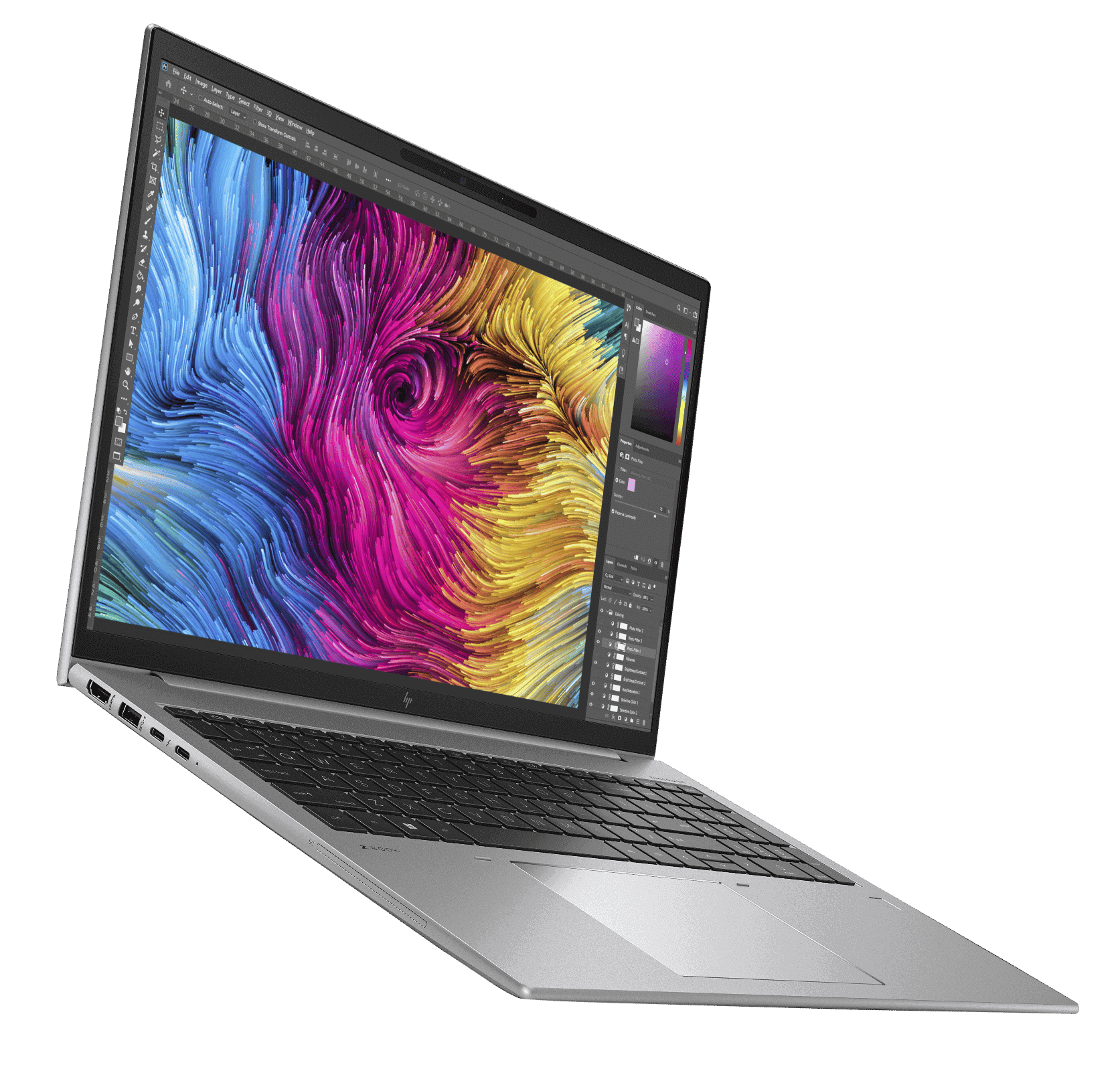When your HP laptop is acting up, it can be very annoying. But most of the time, you can fix the problem if you know what to do. First, figure out if the problem is with the hardware, like the battery or the screen, or if it’s a software issue. Once you know that, you can focus on finding the right solution. It’s also important to keep your HP laptop updated; this can help prevent problems and keep your laptop working well.
For more complicated problems, you might need to get help from a professional. But for everyday issues, there are things you can try on your own. Taking a step-by-step approach to troubleshooting can save you time and money. Simple tricks like resetting your laptop or checking for updates can often solve common problems. For example, if your HP laptop screen is black, try disconnecting the power, removing the battery, pressing the power button for 15 seconds, reconnecting the power, and restarting. This might bring your screen back to life.
Troubleshooting Common HP Laptop Issues
Laptops are fantastic for work and play, but they can run into problems. HP laptops are no exception. Here’s a look at common HP laptop issues and some steps to fix them.
Battery and Power Troubles
A dead battery or power supply issue is one of the most frustrating problems because it stops your laptop from turning on at all. Here’s how to troubleshoot:
- Check the Outlet and Power Cords: Ensure the outlet works by plugging in a different device. Test the adapter and cables for damage or loose connections.
- Remove the Battery: If possible, remove the battery and run your laptop on AC power. If it works with the battery removed, you need a replacement battery.
- Look for Error Lights: Blinking LED lights near the power port can indicate power problems. Check your laptop’s manual to understand these error codes.
Slow Performance
A slow HP laptop is a common complaint. Here’s what you can do:
- Check Startup Programs: Go to Task Manager (Press Ctrl+Shift+Esc) and look at the Startup tab. Disable unnecessary apps that launch when you turn on your laptop, freeing up resources.
- Run Disk Cleanup: Get rid of temporary files and extra system data with the built-in Disk Cleanup tool. Search for “Disk Cleanup” in Windows.
- Update Drivers and Operating System: Outdated drivers and software can cause performance hiccups. Make sure your Windows OS and device drivers are all up-to-date.
Wi-Fi Issues
Slow or lost internet connections can make it hard to use your laptop effectively. Try these troubleshooting steps:
- Check Network Status: Make sure your Wi-Fi router is working and other devices can connect.
- Restart Router and Modem: Power cycle your router and modem to resolve temporary issues.
- Update Wi-Fi Driver: Outdated drivers can lead to connectivity problems. Update your Wi-Fi driver on the HP website.
Troubleshooting Table
| Problem | Potential Fixes |
|---|---|
| Laptop won’t turn on | Check outlet and power cords, remove the battery, look for error lights |
| Slow Performance | Disable startup programs, run disk cleanup, update drivers and OS |
| Wi-Fi connectivity issues | Check network status, restart router/modem, update Wi-Fi driver |
| Overheating | Clean air vents, use a cooling pad, check running processes |
| Keyboard not working | Clean keyboard, check drivers, test with external keyboard |
Important note: If these solutions don’t fix your problem, you might need more advanced repairs. Consult the HP support website, your laptop manual, or contact an HP-certified technician for assistance.
Key Takeaways
- Identify if the problem is hardware or software to choose the correct troubleshooting method.
- Regular updates are essential to maintain laptop performance and prevent issues.
- A systematic approach can resolve common laptop problems without professional help.
Diagnosing and Troubleshooting Common HP Laptop Issues
When an HP laptop starts acting up, knowing how to diagnose and resolve issues can save time and money. This guide offers practical steps to tackle some of the most common problems.
Power and Boot Problems
If your HP laptop won’t turn on, check the power supply and battery first. Ensure the laptop charger isn’t at fault by testing it with another compatible laptop. If it’s working, the charging port may be the next culprit. Look for signs of damage or debris. For a laptop that turns on but doesn’t boot, a reset can help. Turn off the laptop, remove the battery and unplug the charger. Hold the power button for 15 seconds, then reassemble and try to restart.
If the issue persists:
- Battery: Replace if you notice declining health.
- Power supply: Confirm the AC adapter provides the correct voltage.
Hardware Components and Repairs
Hardware issues can range from faulty RAM to a broken hard drive. To spot the problem, the HP diagnostic tool is useful. If your laptop locks or freezes often, check if there’s enough RAM. Upgrading can vastly improve performance. When it overheats, the fan might be dirty or faulty. Clean it or have it replaced. For BIOS or motherboard concerns, a professional repair shop can advise on costs and whether it’s worth fixing.
Remember these tips:
- Serial number: Keep it handy for warranty queries.
- New hardware: Ensure compatibility before buying.
Display and Peripheral Challenges
For screen issues like a dim display, adjusting the brightness may fix the problem. When the screen is black or cracked, the laptop screen may need replacing. Keyboard troubles often are solved by updating your drivers or, if broken, getting a new keyboard. Before sending it for repairs, try using an external keyboard or screen to make sure the problem is with the peripherals.
To troubleshoot display problems:
- Review settings for screen brightness.
- Connect an external display to test the laptop’s output.
Always refer to the user manual or HP’s support website for specific troubleshooting guidance related to your laptop model. Keep your laptop’s documentation and support numbers within reach in case you need professional assistance.
Software Conflicts and Updates
Fixing an HP laptop often involves addressing software conflicts and ensuring timely updates. Proper management of the operating system and drivers can significantly improve laptop performance.
Operating System and Driver Management
Keeping the operating system updated is crucial for the smooth operation of your HP laptop. Regular software updates can fix bugs, add features, and enhance security. Users should routinely check for available updates through the Windows Update feature in their system settings. For drivers, the HP Support Assistant tool can help identify and install the latest versions for your laptop’s hardware.
- Check Windows Update:
- Search for ‘Windows Updates’ in the taskbar.
- Select ‘Check for updates’.
- Install any available updates and restart if prompted.
- Update Drivers with HP Support Assistant:
- Open HP Support Assistant.
- Look for updates under the ‘My devices’ tab.
- Install any recommended driver updates.
Addressing Overheating and Performance Degradation
Overheating can cause performance issues and even damage your laptop. It can result from a buildup of debris obstructing the fan, or it can be due to declining battery health. Regularly cleaning the laptop’s vents and fan can help prevent overheating. When performance starts to degrade, consider backing up important files to an external hard drive and performing a system reset.
- Clean and manage overheating:
- Turn off the laptop and unplug it from power.
- Use compressed air to gently clear vents and fan areas of debris.
- Consider replacing the battery if health is declining.
- Improve performance:
- Backup important files to an external drive.
- Perform a system reset if other fixes don’t improve the slowdown.
By meticulously managing software updates and addressing hardware issues related to overheating, users can extend the life of their HP laptops and maintain optimal performance.
Frequently Asked Questions
This section addresses common issues HP laptop users may face and provides clear steps for resolution.
What steps should I follow to fix a black screen issue on an HP laptop?
First, ensure the laptop is powered off. Then, hold the power button for at least 15 seconds to fully reset it. After doing this, turn the laptop back on to see if the screen is functioning.
How do I troubleshoot an HP laptop that won’t boot past the HP logo screen?
Restart the laptop and tap the F10 key to enter the BIOS setup. Check to see if the hard drive is detected. If not, the hard drive might need replacing. If the hard drive is present, use the HP Hardware Diagnostics to run a system test.
What can cause an HP laptop to not power on, and how can it be fixed?
A laptop that does not power on could have a drained battery, a faulty power supply, or internal hardware issues. First, try a different charger or power outlet. If this does not work, remove the battery and hold the power button for 15 seconds to discharge any remaining power.
How do I perform a startup repair on an HP laptop with Windows 10?
Access the Windows Recovery Environment by restarting the laptop while pressing the F11 key. Choose ‘Troubleshoot,’ select ‘Advanced options,’ and then choose ‘Startup Repair.’ Follow the on-screen prompts to complete the repair process.
Why won’t my HP laptop start Windows 11, and what are the solutions?
Incompatibility or software conflicts can prevent a laptop from starting Windows 11. Begin by performing a hard reset. If unsuccessful, access the Windows Recovery Environment to troubleshoot further, which may include restoring from a previous system restore point.
What are the common reasons my HP laptop isn’t working, and how can I diagnose them?
Issues may stem from hardware failures, software errors, or battery problems. Diagnose these by using the HP Hardware Diagnostics tool. Run quick tests on the system components to identify any critical hardware issues that may need repair.







